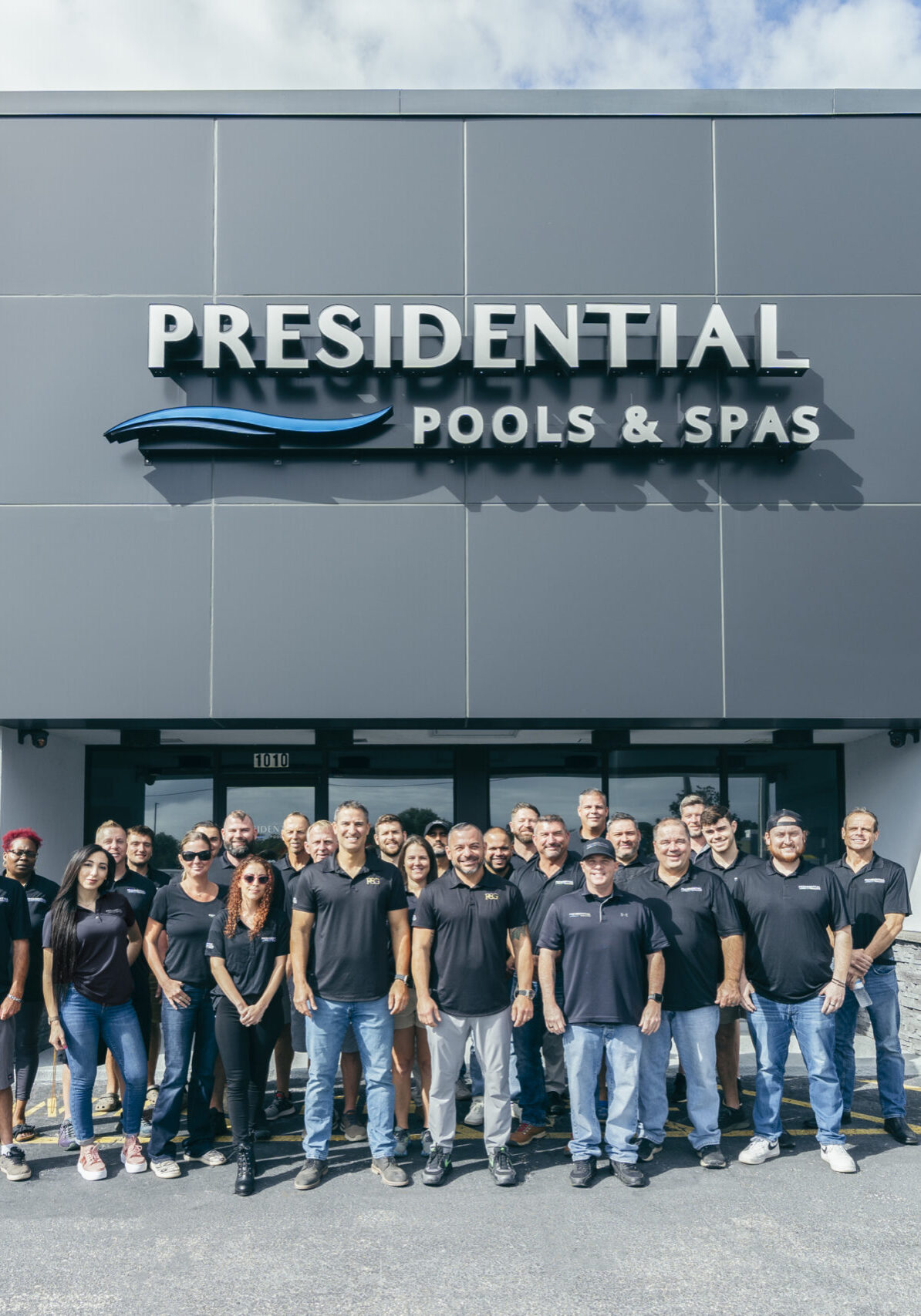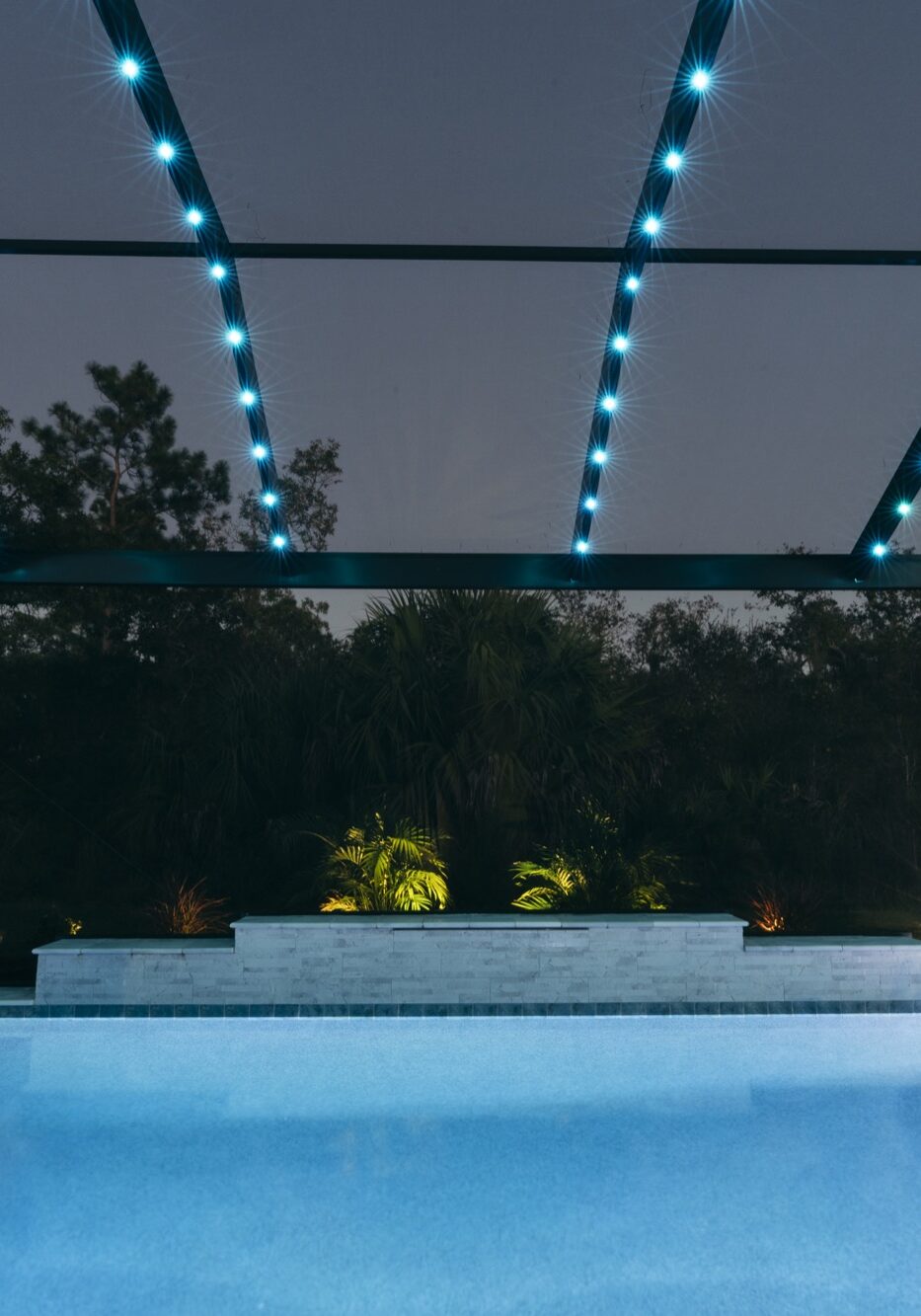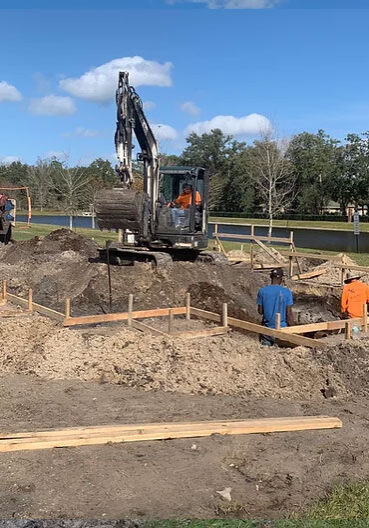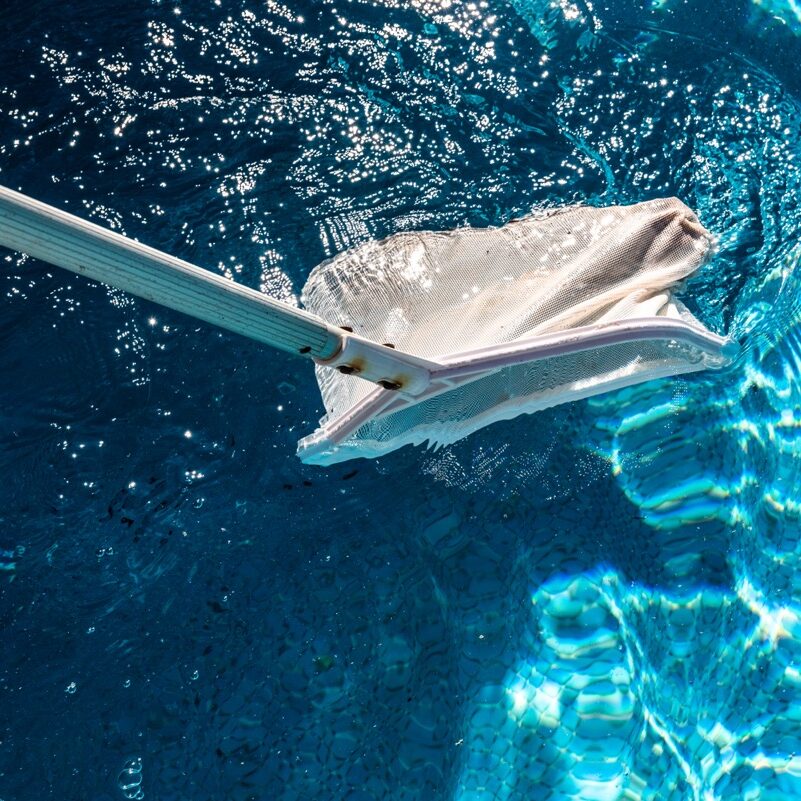Frequently Asked Questions
Dreaming of a backyard oasis? We understand you have questions! This FAQ page is your one-stop shop for all things pool building with Presidential Pools and Spas. Dive in and explore topics like permits, design options, budgets, timelines, and maintenance. We've compiled answers to the most frequently asked questions to make your pool-building journey smooth sailing. If you can't find what you're looking for, don't hesitate to contact us! Let's make your dream pool a reality.
Beginning the Process
We’re always available to meet with you and discuss your new backyard project! Typically, once you have shown interest by filling out a form, emailing us or calling us, a design specialist will reach out within 24 hours to set a time to come meet with you at your residence to learn more about what your backyard oasis looks like. You are also encouraged to do some Google searching for ideas on what you are looking to do in your backyard prior to meeting with us. This will allow us to quickly start with your design and get the process moving much quicker than normal.
The cost of designing and building a swimming pool can vary significantly based on several key factors. Our dedicated Presidential Pools & Spas team works with you to create a design with features that suit both your dreams and your budget. Below are some of the main elements that can influence the final cost of your pool:
- Type and Size of the Pool: Whether you choose an in-ground or above-ground pool can greatly affect the cost. In-ground pools typically cost more due to excavation and a more involved build. Larger pools require more materials and labor, increasing the overall price.
- Material Used: The choice of material can also influence the cost. For example, vinyl is typically the most inexpensive option, followed by fiberglass and concrete. Concrete is the most expensive material due to its durability and adaptability to design.
- Location: The location and accessibility of your backyard can affect the cost. If it’s difficult to access, it could increase your overall labor costs. The type of soil, slope of the yard, and the local climate can also affect installation costs. We always consider your budget when designing your custom pool and spa.
- Custom Features: Adding features such as waterfalls, slides, diving boards, hot tubs, or complex lighting can increase the overall cost. Similarly, choosing a saltwater system instead of chlorine, or opting for an automated cleaning system, will also affect the overall price of a new build or a remodel.
- Landscaping and Decking: Surrounding pool elements such as patios, decks, fencing, and landscaping are typically not included in the base price of the pool and can significantly increase your project’s overall cost. We will offer the best options for your needs while keeping your budget in mind.
- Ongoing Maintenance: While pool services and maintenance is not part of the installation cost, it’s important to factor it into in the ongoing cost of your pool and spa oasis. Your costs includes cleaning, chemical adjustments, potential repairs, and winterization.
We invite you to speak with one of our pool specialists to get a better understanding of the potential costs associated with your dream pool. We are committed to transparency, and strive to give you all the information you need to make an informed decision.
A well-maintained pool ensures clean, safe, and enjoyable use for years to come. Here are some key maintenance tasks you’ll need to consider:
- Cleaning: Regular cleaning of your pool is essential. This includes skimming leaves and debris off the surface, brushing the pool walls and floor, and vacuuming. If your pool is outdoors, it might require more frequent cleaning.
- Chemical Levels: Keeping your pool’s chemical levels in balance is crucial to prevent bacteria and algae growth and to maintain the water’s pH level. This typically involves testing and adjusting levels of chlorine or salt, pH, alkalinity, and calcium hardness.
- Filter Maintenance: Your pool’s filter system plays a crucial role in keeping the water clear and free of small debris. It’s important to clean and backwash the filter as per the manufacturer’s instructions. Depending on the type of filter you have (sand, cartridge, or diatomaceous earth), maintenance procedures can vary.
- Water Level: Your pool’s water levels should be monitored closely. Water levels should not get too low (which can cause the pump to run dry and overheat) or too high (which can affect the skimmer’s functioning).
- Check and Maintain Equipment: Regularly check your pool’s pump, heater, and other equipment to ensure all are working properly. Periodic servicing may be required, especially after the winter months.
- Professional Inspection: It’s recommended to have a professional inspect your pool annually. They can spot potential issues early, such as leaks or equipment malfunctions, saving you from more costly repairs down the line.
At Presidential Pools & Spas, we understand that maintenance can be a lot of work, so we offer a range of maintenance services to help keep your pool in top shape. Please contact us for more details on these services
At Presidential Pools & Spas, safety is one of our top priorities. Here are some safety measures we highly recommend for all pool owners:
- Fencing: Installing a secure fence with a self-closing, self-latching gate around your pool can prevent unsupervised access, especially from young children and pets.
- Alarms: Installing alarms on all doors and windows leading to the pool area can provide an additional layer of safety. Also, consider a pool alarm that will alert you if someone or something enters the water.
- Covers: When the pool is not in use, a safety cover can prevent accidental falls into the water.
- Anti-Slip Surfaces: Slippery surfaces are a common cause of poolside accidents. Consider installing non-slip materials around your pool deck and entrance area.
- Depth Markers: Clearly marking the depth of the pool can prevent swimmers from diving or jumping into shallow water.
- Life-Saving Equipment: Always keep life-saving equipment such as life rings or reaching poles near the pool.
- Drain Covers: Ensure all drains have safety covers to prevent suction entrapment.
- Pool Rules: Establish and enforce pool rules such as ‘No running’, ‘No diving in shallow water’, ‘Always swim with a buddy’, etc. Signage is an additional reminder to stay safe around your pool.
- Swimming Lessons: Ensure everyone in your home knows how to swim. If they don’t, consider enrolling them in swimming lessons.
- CPR: Haveat least one family member who is trained in CPR present to supervise.
It’s important to remember that while these measures can significantly reduce any risk, they do not replace active and experienced supervision. Always keep a close eye on anyone in or near the pool.
Presidential Pools & Spas is committed to helping you create a safe and enjoyable environment. Our team is always available to provide more detailed advice on pool safety features and precautions.
The average timeline is 3-6 months once we have completed the dig stage of your swimming pool.Our team will keep you informed during every stage of the build!
Read more about the twelve steps of our construction process.


Designing Your Pool Oasis
Usually we can be creative enough to make almost any design fit the circumstances! But there are some situations that we can not control such as setbacks, HOAs, access, size, and the location of utility lines that may impede or create changes in our digs.
It’s always easier to plan water features at the design stage of a pool build. It is possible, but it saves time and money if it is included in the initial build.
Great question! If you’re planning to host parties and have a good time year-round in your backyard, talk to your designer! A sun shelf for relaxing. Wide steps and benches to hang out on. Water features to create some white noise or block out unwanted sounds. Bar stools. Swim up bar. Fire pits or fire bowls. There are so many ideas – imagine your ideal pool experience!
The most popular design is a “Play Pool” – a pool that is functional and fun at the same time. We usually like to build pools around 5′ to 5’6″ deep so you can swim, walk and play all in the same pool. Diving pools cost more to build and aren’t as fun and functional as a play pool.
There are several types of pools including above-ground, in-ground, concrete, vinyl-lined, and fiberglass pools. Each type has its own advantages and drawbacks regarding cost, durability, maintenance, and customization. Presidential Pools & Spas only offers in-ground, concrete pools as they have the longest durability and allow for maximum customization and your ultimate experience.
Building A Pool
Yes! We will enroll you in “Pool School” once your new pool is filled. We will introduce you to your pool equipment and set up your controllers/automation. We’ll add the initial chemicals to the pool to ensure a proper start up, and provide all the manuals to your pool equipment as well.
Adding an in-ground spa to your pool will typically start around $16,000 depending on the features, sizes and amenities that you choose. Talk to our design team about adding this feature.
Of course! We will assign a project manager to your project to be your first point of contact during the entire process. The project manager ensure everything is perfect and is exactly how you envisioned your pool.
Presidential Pools and Spas requires a 10% deposit of the agreed-upon price upon contract signing. The remaining payments are paid upon successful completion of certain milestones: 35% of the contract will be paid after excavation; 30% of the contract will be paid once gunite (the concrete pool shell) has been placed; 20% of the contract will be paid once the deck has been completed; and the remaining 5% will be paid once the pool has been filled. If you obtain financing, a 10% deposit is still required (some finance companies do not provide this deposit).
We only use the best – Pentair! Talk to our consultants to find out why we choose this product.


Maintaining Your Pool
There is a flow switch inside the salt cell. When water flows over that switch, it will tell the salt cell that it is safe to produce chlorine. If there is not enough water going across the flow switch, the sensor is not tripped and you will get a low flow indicator. If there is anything causing a low water flow to the pump/cell, such as a dirty, leaf filled skimmer basket, this could create the No Flow issue. Other causes could be a dirty filter or a dirty or clogged salt cell. Make sure your filters, cell, and baskets are all clean and not obstructing the flow before assuming that your flow sensor is bad.
A “No Cell Power” issue can usually be solved by turning the breaker that controls your system off then back on. If that does not fix the issue, we’ll send a technician out to take a look. A “No Cell Power” display might point to a bad relay or bad circuit board.